Hi – I’m Tim Snyder, motorcycle enthusiast and long distance rider.
“Wait until the kids are out of school, then you can get a Harley.“
That’s what my wife said when I brought up the subject of getting a motorcycle. I had ridden a Honda 160 Dream when I was in my 20s, but had to sell it when I moved from Florida to Pittsburgh. I missed riding, but pursuing a career, buying a home, and raising children took precedence. No doubt I wouldn’t have had time to ride as driving our sons to soccer games and music lessons took up most of the time I could have spent riding.
Experienced
Now I’m an experienced long distance rider. I have ridden in 49 states and the District of Columbia. I’ve done the USA Four Corners ride (Key West to Madawaska, ME to Blaine, WA to San Ysidro, CA.) I’ve done several Iron Butt Association Rides. I’ve been to Rolling Thunder 5 times. The experience didn’t come quickly or easily. I had to work up my endurance and improve my skills to get to this level of riding.
Riding Renewed
Thirty years after I sold the Honda Dream, a friend offered to let me ride his Low Rider. I was living in Pittsburgh at the time. I rode on the back while he took me to a school nearby. He gave me the bike and I rode it around the parking lot. I did just fine, so we went to a remote road. My first trip up and back went well. The second trip not so well – I dropped the bike when turning around. A neighbor saw me fall and helped me get it started again. I was very embarrassed because I put some scratches on the bike. My friend was unconcerned and insisted I ride a little more.
After that mishap, I enrolled in the Basic Rider Course and got my learner’s permit. Also, I set my sights a little lower and decided to buy a small bike to learn on after I got the green light to buy a bike. I found a 250 cc Honda Rebel online and bought it for a very reasonable price.
My First Harley
I rode the Rebel all around the North Hills and thought I had mastered riding, so I convinced myself it was time to move up to a Harley Super Glide. That model is one step above a Sportster and it’s a lot bigger and heavier than a Rebel. My riding skill level was very elementary and the weight of the bike was a big concern to me. I could correct my mistakes on a lighter bike by putting a foot down and righting it. It was almost impossible to correct mistakes that way on the Harley.
“The bike goes where you look.“
I was half-way through the Basic Rider course when I decided to take the bike out for a test drive and have lunch with my wife at her workplace. On the way home I looked at a guard rail on a curve and ran right into it at 15 mph. My right leg got sandwiched between the air cleaner and the road and broke. An orthopedic surgeon patched me up and I was laid up for 8 weeks. By the time I could walk on the leg it was the middle of winter and there was no way I could get back on the bike.
Do-Over
I had all winter to contemplate my next move. I decided to sell the Harley and get a medium-weight bike. I had to re-take the Basic Rider course and start the learning process from the beginning. The Harley didn’t sell, so I kept it parked and bought an old Honda Magna. It needed a lot of work, so I improved my wrenching skills as well as my riding skills. It was dangerously fast, but much easier to ride and a good platform for a beginner.
More Riders in the Family
My younger son had learned to drive a car at 16 and at 17 wanted to learn to ride a motorcycle, so we took the Basic Rider class together. He was very skilled – he aced the written and the riding tests. We bought him a Honda Night Hawk 250 to use for practice. Together we rode back roads accumulating the 50 hours he needed to finalize his M endorsement.
Later in the year my wife rode on the back of my bike a couple of times. The trips were short, but she complained that the seat wasn’t comfortable, she didn’t like bumping helmets, and she didn’t like not being in control. My son and I urged her to get a bike of her own. She thought she wanted a Vespa, but we nixed that idea. So she took the course in the Fall and passed with flying colors. She practiced on the Night Hawk for a few months, then the next Spring we got her a Suzuki Savage. The Savage has a single-cylinder 650cc engine and is very light. It’s a great beginner’s bike.
Through friends my wife found and joined the Motor Maids, the oldest women’s riding organization in North America. The group was founded in 1940. They meet locally and have a national convention in a different part of the country each year. Many of our long distance rides are to and from those conventions.
First “Long” Ride
One of the practice rides my son and I took was a trip on the Interstate to a motorcycle shop that sells Moto Guzzi, Ural, and Royal Enfield. That shop was 110 miles from home. That was a very long distance for us. We stopped to rest about every 35 miles! We were cold and sat inside convenience stores drinking hot chocolate. The trip took all day, but we negotiated traffic and passed trucks without incident.
For this trip we used the first accessory that wasn’t riding apparel. I purchased a pair of Chatterbox communicators. We had some difficulty getting them to work. We mounted them on our helmets and attempted to use the VOX feature. We couldn’t find the right setting to get the VOX working to our satisfaction, but we were able to talk to each other. That experience demonstrated the value of being able to talk to your riding partner.
Try Again
By Fall I had improved enough to get back on the Harley. It still seemed heavy and I was a bit intimidated by it, but the more I rode it, the more comfortable I became. I rode several times a week after work and occasionally on Saturdays. The weekend rides covered longer distances. I frequently rode 200 to 300 miles in a day. I especially enjoyed riding into Ohio where the roads had curves that weren’t too technical. I found riding sweepers to be the most fun.
Much Longer Rides
In 2005 I took my first solo, overnight ride to north-central PA along US-6. The weather was clear, but cold. I learned than wearing a rain suit can keep you warmer than adding layers. A good rain suit will keep the wind out and keep your body heat in. Later that year we bought a Suzuki SV650 for my son and after his high school graduation we rode to New Hampshire and the Laconia rally. Together we learned that gaiters will keep your boots dry and wet leather doesn’t dry quickly.
In the following year I took a really long ride. I rode to Daytona and Key West. It was early March and pretty cold in the mountains of West Virginia. In fact it was 27 deg. one morning when I got on the road. It was snowing when the bike quit running at a stop light and was hard to start. I made it to the next town and parked under an awning. Fortunately I was carrying spare spark plugs, which I changed. The bike ran perfectly after that. Lesson learned: carry spares and tools. I was able to ride 450 to 500 miles a day on that ride. I also learned an important lesson during that trip: You can’t rely on friends to give you
clear directions over the phone. I was headed to a friend’s house located just north-east of Miami. I followed the directions as best I could, but when the exit number didn’t appear, I stopped and called. It turned out I was south-west of Miami and had to back track through rush hour traffic. I knew then that I had to get a GPS and let it direct me to wherever I wanted to go.
See the Country
The Daytona trip revealed that I really like riding around the country. I’ve always enjoyed traveling around the country. We took long, cross-country trips when I was a kid and we took our sons on extended vacations with our travel trailer. Riding the highway on two wheels was an altogether different and exciting experience. There’s no air conditioning or heater; there’s no protection from the rain; and you smell whatever died recently or is in bloom.
Corner to Corner to Corner to Corner
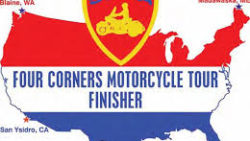 I was looking for a new adventure when my son discovered the USA Four Corners ride on the internet. The ride is sponsored by the Southern California Motorcycle Association and consists of riding to the four corners of the US (San Ysidro, CA, Blaine, WA, Madawaska, ME, and Key West, FL) in 21 days or less. Riders can travel to the corners in any order and do not have to return to the first corner after reaching the fourth corner. The shortest route from the first to the fourth corner is about 6,300 miles, but you have to add the distances from home to the first corner and from the fourth back home. Adding a stop in Washington, DC for Rolling Thunder and the route I wanted to take added up to nearly 11,000 miles. That’s four times the distance of the Daytona trip!
I was looking for a new adventure when my son discovered the USA Four Corners ride on the internet. The ride is sponsored by the Southern California Motorcycle Association and consists of riding to the four corners of the US (San Ysidro, CA, Blaine, WA, Madawaska, ME, and Key West, FL) in 21 days or less. Riders can travel to the corners in any order and do not have to return to the first corner after reaching the fourth corner. The shortest route from the first to the fourth corner is about 6,300 miles, but you have to add the distances from home to the first corner and from the fourth back home. Adding a stop in Washington, DC for Rolling Thunder and the route I wanted to take added up to nearly 11,000 miles. That’s four times the distance of the Daytona trip!
I decided to do the trip and spent a lot of time planning my route. I didn’t know how far I could go in a day, so I made a plan for 500 miles a day and an alternate for 400 miles a day. In all I covered 11,000 miles in 29 days. I completed the Four Corners segment in 16-1/2 days. I took the ride one day at a time and discovered it was easier than I anticipated. Covering 500 miles in a day is relatively easy and there’s plenty of time to rest each night. You can read my journal here.
Time For a New Bike
I did all this long distance riding on a Super Glide. Although it’s capable of going coast-to-coast, it’s not a touring bike. It has a windshield, not a fairing; foot pegs, not floor boards; after market saddle bags, not factor-built hard cases. After riding the bike 60,000 miles, it was time to move up to a full touring bike. In late 2009 I took a temporary job in Florida. Before moving down permanently, I bought a Harley Road Glide. This model is a full touring bike with a fixed fairing. It provides a bit more protection from the elements, is far more comfortable, and has hard bags. I transferred the Givi top case from the Super Glide.
In 2010 my wife and I rode to her Motor Maids convention is Cody, WY. The Road Glide was a dream to ride. It handled the strong cross winds in Nebraska easily. In 2011 a friend from Pittsburgh organized the first national Road Glide meetup in Gettysburg, PA. I attended that rally after accompanying my wife to Grand Rapids, MI and her convention. As you can see, by this time we were “old hands” at riding across the country. We enjoyed the thrill of our adventures and the pleasure of getting together with friends.
Iron Butt Riding
 A friend introduced me to the Air Hawk seat pad around this time. I bought one and was amazed at how it eliminated seat pain. With an Air Hawk I could ride much farther in a day. The added comfort got me thinking that it might be possible to do an Iron Butt Association ride. The easiest Iron Butt ride is a Saddle Sore 1000 – riding 1000 miles in less than 24 hours. I decided to give it a try. I left at 4 am one Saturday, rode up to the panhandle of Florida, and just far enough into Alabama to get to the 500 mile point. Then I turned around and rode home. It took me about 17 hours to complete. I was pretty proud of the accomplishment – I was an Iron Butt rider.
A friend introduced me to the Air Hawk seat pad around this time. I bought one and was amazed at how it eliminated seat pain. With an Air Hawk I could ride much farther in a day. The added comfort got me thinking that it might be possible to do an Iron Butt Association ride. The easiest Iron Butt ride is a Saddle Sore 1000 – riding 1000 miles in less than 24 hours. I decided to give it a try. I left at 4 am one Saturday, rode up to the panhandle of Florida, and just far enough into Alabama to get to the 500 mile point. Then I turned around and rode home. It took me about 17 hours to complete. I was pretty proud of the accomplishment – I was an Iron Butt rider.
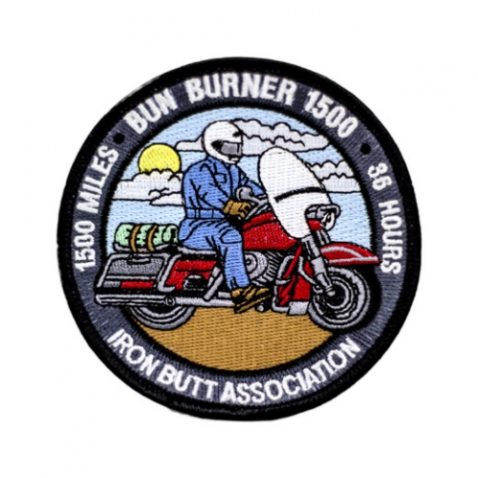 In 2012 the Road Glide rally was in St. Claire, IA. A group of us took three days to ride from New Orleans to Le Claire following the Great River Route. The trip was lots of fun and the pace was leisurely. I was thinking in the back of my mind, however, that the distance from Le Claire to home was a little more than 1500 miles and with that distance was the possibility of doing another Iron Butt ride, the Bun Burner 1500 – that’s riding 1500 miles in less than 36 hours. In short, I rode the first 1000 miles in 18 hours, slept 6 hours, and finished the last 500 with a total time way less than 36 hours.
In 2012 the Road Glide rally was in St. Claire, IA. A group of us took three days to ride from New Orleans to Le Claire following the Great River Route. The trip was lots of fun and the pace was leisurely. I was thinking in the back of my mind, however, that the distance from Le Claire to home was a little more than 1500 miles and with that distance was the possibility of doing another Iron Butt ride, the Bun Burner 1500 – that’s riding 1500 miles in less than 36 hours. In short, I rode the first 1000 miles in 18 hours, slept 6 hours, and finished the last 500 with a total time way less than 36 hours.
Planning
My wife and I continue to ride on long trips. We go to her Motor Maids conventions and I go to various Road Glide meetups. I do most of the planning for the trip we take together. We set the schedule and then I fit the stops in to get us to our destination in a reasonable time. Occasionally we head directly to the destination city, but we usually ride to places we’d like to see that are generally along the way and we usually add a few days for touring, especially when the destination is very far from home.
My family and friends have encouraged me to share the expertise I’ve gained from ten years of motorcycle trip planning and riding. So I’ll share what I’ve learned in articles about trip planning. Look for them in the coming months.

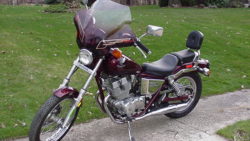

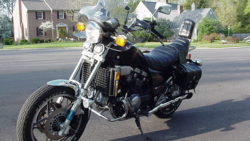
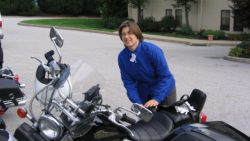
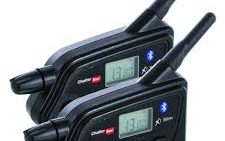
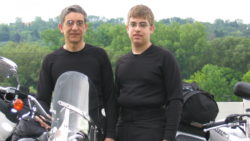
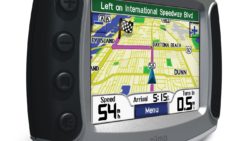
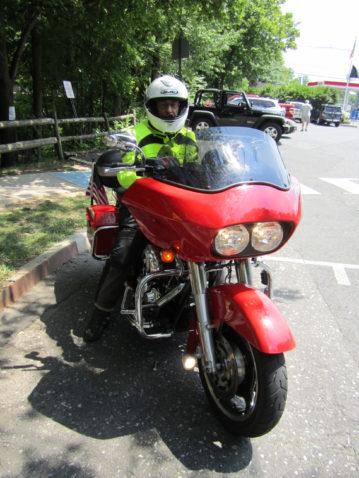

Comments
Tim Snyder, Motorcycle Enthusiast — No Comments
HTML tags allowed in your comment: <a href="" title=""> <abbr title=""> <acronym title=""> <b> <blockquote cite=""> <cite> <code> <del datetime=""> <em> <i> <q cite=""> <s> <strike> <strong>